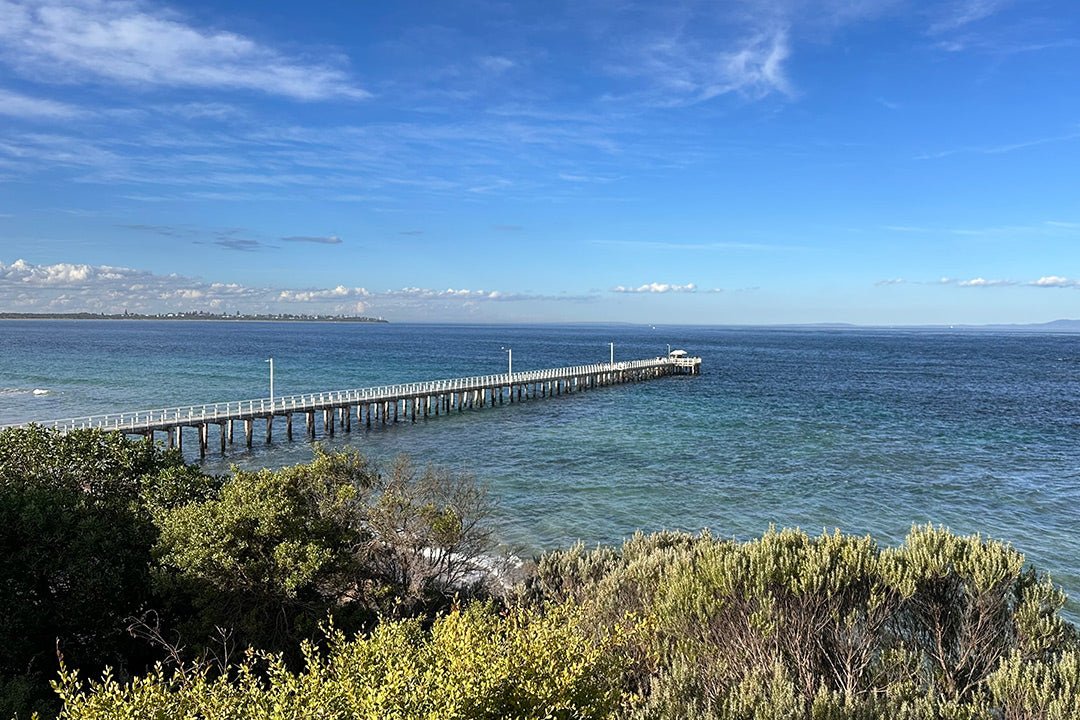

The Bellarine Peninsula has long been appreciated by beachgoers, but its wineries, history, wetlands and trails are full of surprises for the exploring traveller.
Two peninsulas enclose Victoria’s mighty Port Phillip Bay in a giant bear hug. On the eastern side of the bay is the Mornington Peninsula — upmarket and often brimming with out-of-towners — while to the west is the more low-key and local vibe of the Bellarine Peninsula.
The Bellarine has long been appreciated by beachgoers, but its wineries, history, wetlands and trails are full of surprises for the exploring traveller. And if the almost 20 caravan parks scattered across it are anything to go by, it’s heaven for caravanners too.
Coast with the most
There’s no doubt the coastline is where much of the Bellarine’s action is, not just for beaches and water-related fun but it’s also where most of its little towns are situated.
Plenty of caravan parks put you right in the heart of things, either with absolute water frontage or within a stone’s throw of it. Set up the van on the foreshore at Portarlington or St Leonards, for example, and you can join the contingent who carry chairs and maybe a coldie across to the sand to chillax (particularly handy at sunset). Located on the bay side, they’re sheltered and calm and are great for safe swimming (along with the beaches at Queenscliff and Point Lonsdale), but if you prefer waves and invigorating ocean breezes, head south to Ocean Grove and Barwon Heads.
Consider these twin towns the Bellarine’s very laidback version of a surfer’s paradise, and without the high-rises. They’re linked by a bridge over the Barwon River and offer plenty of options for playing on sand flats and swimming in the shallow and protected waters of the river or riding the waves at Ocean Grove’s 9km-long surf beach. Drive slowly around here because the region is one big playground and there are often kids preoccupied with dripping ice creams or surfers jogging across the road with boards tucked under arm.
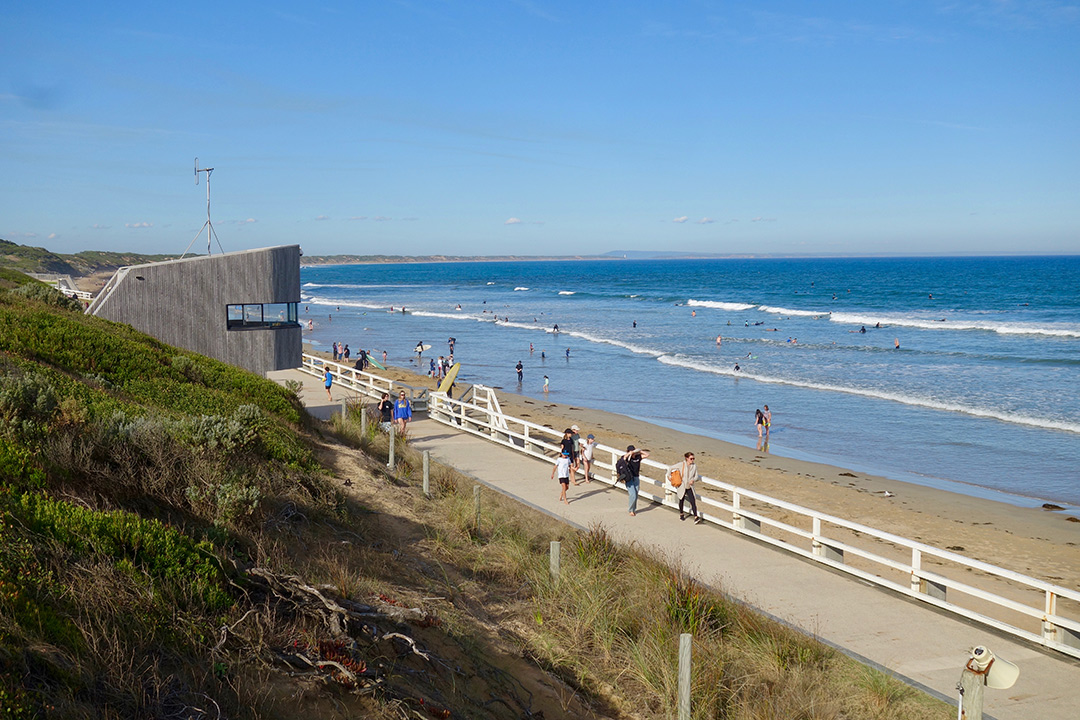 Ocean Grove Beach
Ocean Grove Beach
If you fancy embracing the surf culture, Ocean Grove is a fantastic place to learn, being slightly protected by a headland; operators like Go Ride A Wave are skilled in getting beginners to stand up. Experienced surfers enjoy the bigger waves at 13th Beach.
Considering Port Phillip Bay covers nearly 2000 square kilometres, and the entrance to the Bass Strait is a mere 2km across, it’s an impressive sight to stand near The Heads (aka ‘The Rip’) and watch all that water rushing through. The Lighthouse at Point Lonsdale is a good place to see ships negotiate the churning waters and to wave to Point Nepean on the far shore. Another good vantage point is Queenscliff Lookout. You’ll find an interesting scale model of The Rip and its seabed at the Queenscliff Maritime Museum.
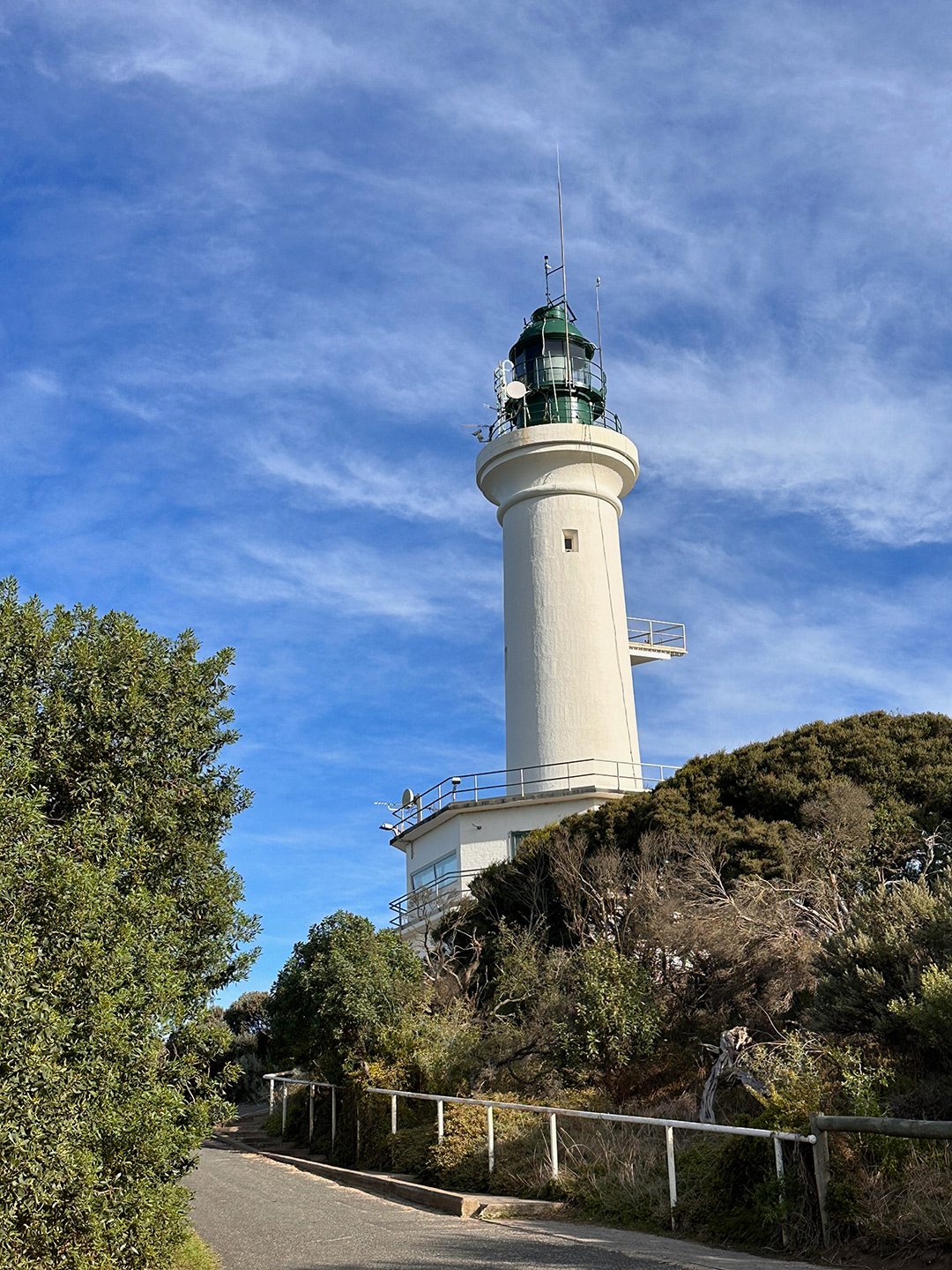 Point Lonsdale Lighthouse
Point Lonsdale Lighthouse
Port Phillip is a haven for marine life and has great biodiversity. Head to St Leonards Pier with a mask and snorkel to see fish, sponges, nudibranchs, seahorses and even weedy and leafy sea dragons. Take care, though, because it’s also popular with fishermen looking to hook squid, snapper, flathead and whiting.
Sea All Dolphin Swims can take you out on a boat to swim with scores of Australian fur seals and maybe a few dolphins too. They also visit the Pope's Eye, the circular foundations of an island fort that never ended up being completed but now teems with marine life.
Blasts from the past
The wreck of the paddle steamer Ozone, protruding from shallow waters off St Leonards (incidentally, another popular spot for snorkelling), is a reminder of another age. Wind the clock back to the 1880s and Queenscliff was one of the state’s most fashionable seaside resorts with up to 2500 tourists per day arriving from Melbourne by paddle steamer — check out the historic shelter shed still perched at the end of Queenscliff Pier. Back then, hotels and mansions flourished and since the 1920s there’s been very little new development, leaving today’s gorgeously quaint streetscapes.
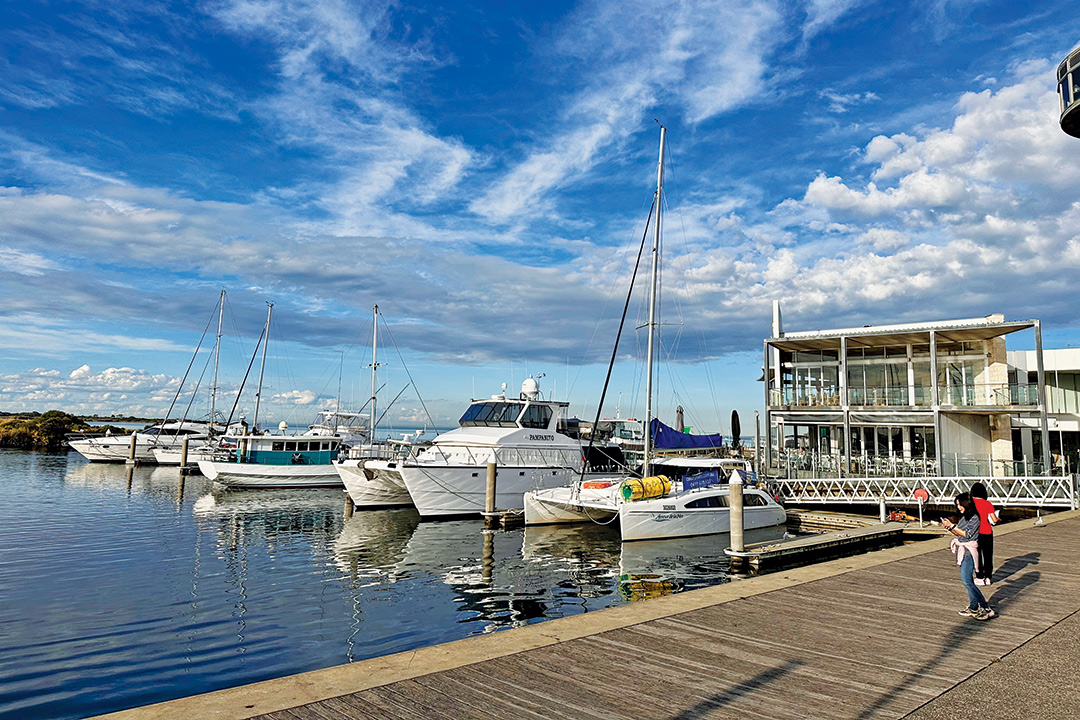 Queenscliff Harbour
Queenscliff Harbour
The 1880s was also when Fort Queenscliff was completed. Located near The Heads, Queenscliff offered a strategic location for defence, and it is claimed that when the British Empire’s first artillery shots of WWI were fired from Point Nepean (across the water), the orders came from here.
Since it’s still an active Defence Department site access is by guided tour only, so make a booking if you plan to visit what is one of Australia’s largest and best-preserved forts. Inside its walls are heritage buildings, a range of guns, underground magazines, a military museum and Australia’s only ‘black’ lighthouse (unpainted and made of basalt bricks).
Queenscliff needed a rail line from Geelong to help service the port and fort, and by 1879 one was completed. By 1976 the line closed until the Geelong Steam Preservation Society reopened a section of it a few years later. Now the Bellarine Railway is operational between Drysdale and Queenscliff and is utilised by three heritage train experiences: The Blues Train (a rolling live music gig), The Q Train (a gastronomic feast) and Day Out With Thomas rides (i.e., Thomas the Tank Engine).


Stretch the legs
To follow the entire route of the old train line, get on your bike and onto the 35km Bellarine Rail Trail, offering a scenic ride through the countryside. Alternatively, glorious bay views can be had on the 11km Foreshore Trail between Portarlington and St Leonards. If you don’t have your own wheels, you can rent some from Bella E-Bike Hire.
The foreshore trail finishes at Edwards Point Reserve but it’s here that you can slip onto a beautiful walking track running up the sand spit separating Swan Bay and Port Phillip. It’s about two to three hours return to Two Bays Lookout, passing through the only stand of natural coastal woodland remaining on the Bellarine as well as extensive salt marshes and vegetated dunes. It’s a great spot to watch the many birds that flock here, from hunting kites and swamp harriers to mudflat waders, and the light is particularly beautiful at sunset. Keep an eye out for greenhood orchids alongside the track in spring.
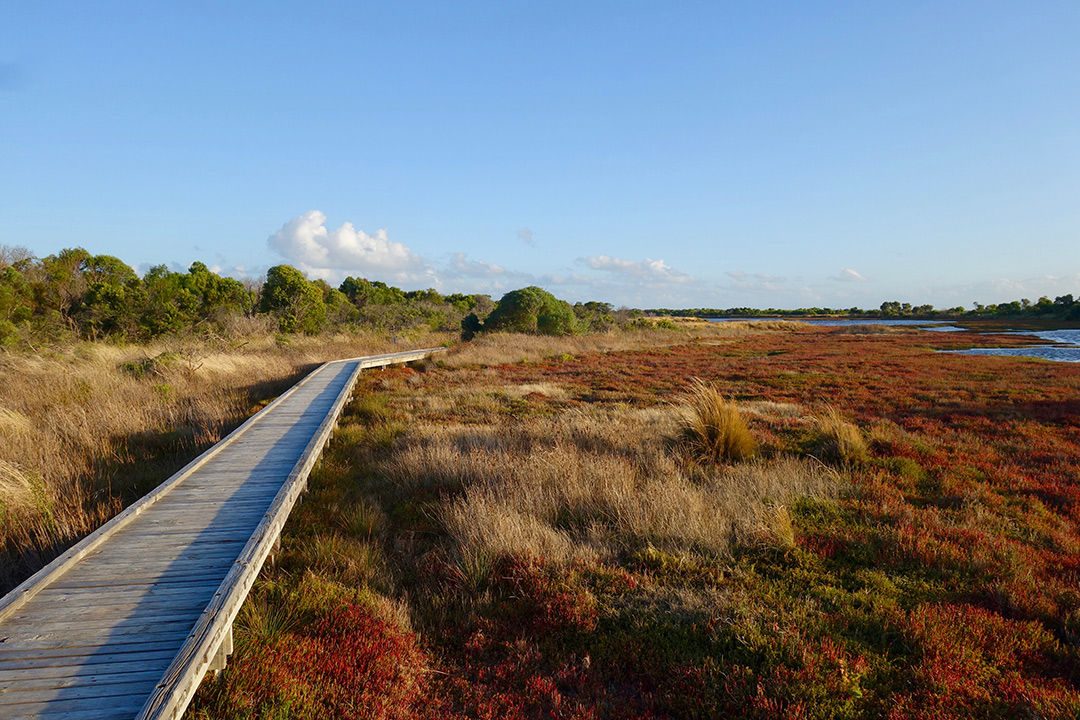 Edwards Point walk
Edwards Point walk
Another significant wetland is Lake Connewarre. This huge estuarine lagoon is Ramsar protected (i.e., internationally significant) and part of the southern-most point of the East Asian Australasian Flyway — a flight path followed by migrating birds around the planet. Drive to Taits Point, at the end of Staceys Road in Connewarre, to find a couple of viewing platforms from where you can spot some of the 149 species that visit.
Another nice walk is a 5.6km return amble through stands of moonah and mangroves aside the peaceful Barwon River — park at Barwon Heads boat ramp off River Parade. A walk around Barwon Heads Bluff gives great views over the river mouth and ocean. Start from the waterfront restaurant At The Heads (aka Diver Dan’s boatshed in the TV series Sea Change).
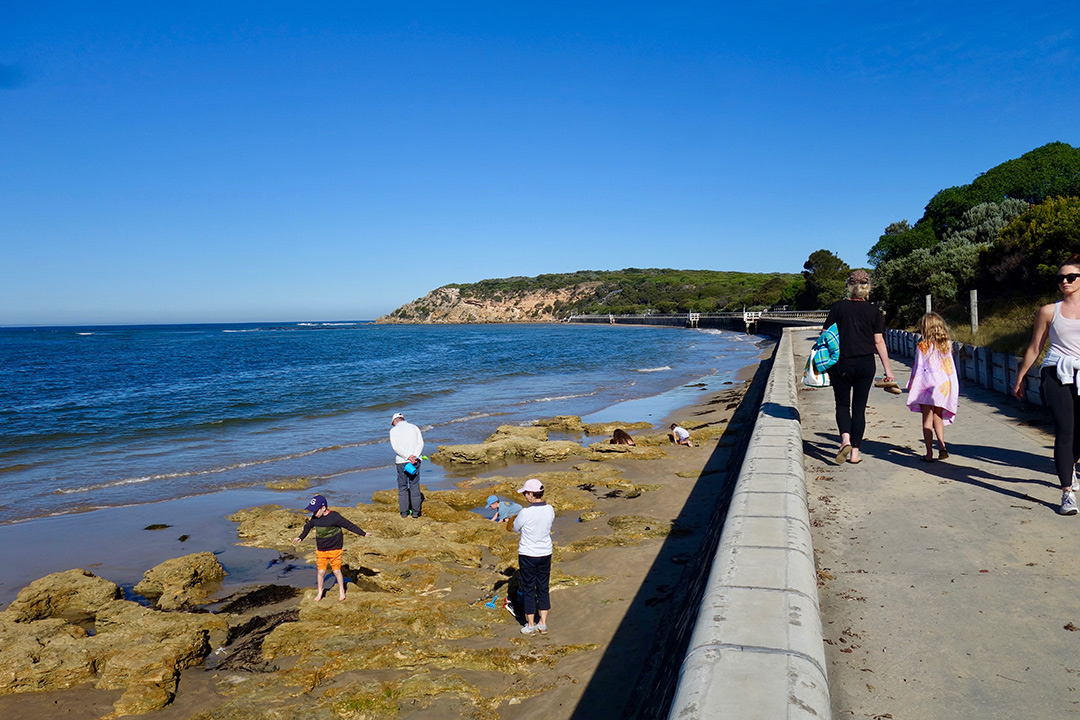 Starting the Barwon Heads Bluff walk
Starting the Barwon Heads Bluff walk
If you prefer to get your steps in on a golf course, know that three of the dozen odd golf courses here — Barwon Heads Golf Club, Lonsdale Links and 13th Beach Golf Links — are rated in the top 10 public courses in Australia.
Town and culture
If you fancy a little culture and shopping, there are a few precincts worth checking out. The Victorian charm of Queenscliff’s Hesse Street provides the backdrop for inspiringly different clothes boutiques, bookshops, cafes and no less than four art galleries. Set across two levels of an old drapery store, Salt Contemporary Art is particularly impressive, showing the work of painters, printmakers, sculptors, glass artists and ceramicists.
In Barwon Heads, Hitchcock Avenue has a contemporary coastal vibe with plenty of cafes slotted in between surf shops and boutiques. The ethical fashion and homewares at Kiitos Living by Design might stretch the wallet a bit but they’re super cool and unique.
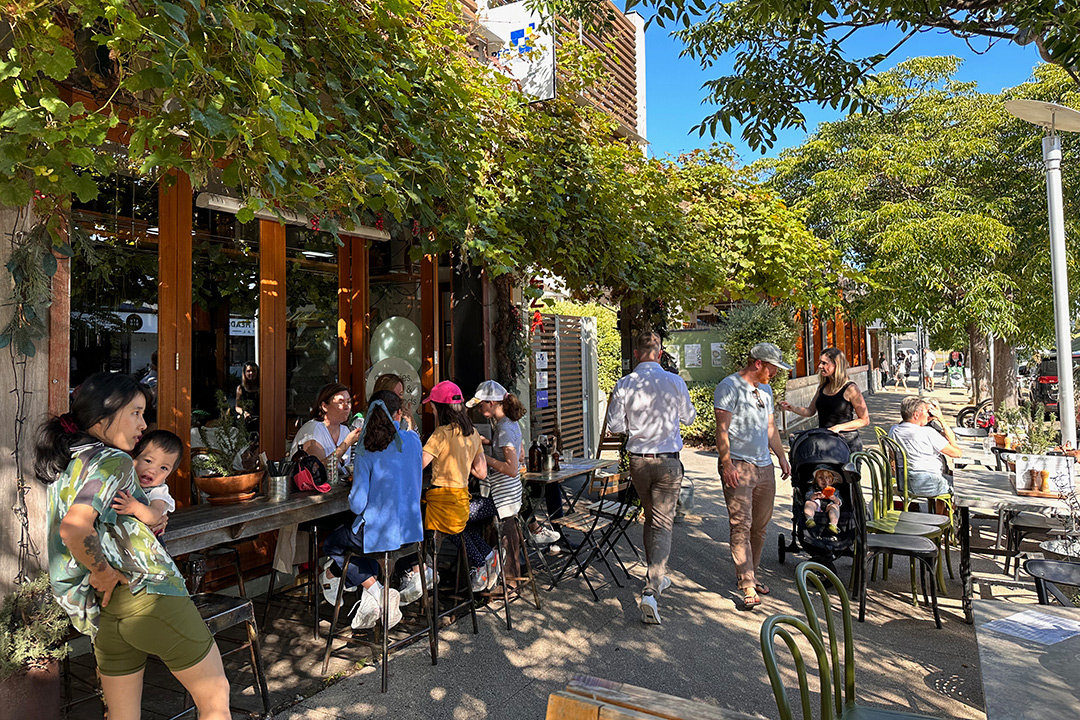 Annie's Provedore on bustling Hitchcock Avenue, Barwon Heads
Annie's Provedore on bustling Hitchcock Avenue, Barwon Heads
The Terrace is Ocean Grove’s main hub but it’s definitely worth visiting the industrial estate (yes, really) to find Hive Gallery. This two-story gallery is full of paintings, ceramics and handcrafted furniture but perhaps most impressive are the bronze creations — birdbaths are a specialty — by Willie Wildlife Sculptures. Will’s work is so highly regarded it’s appeared in places like the Chelsea Flower Show and Singapore Botanic Gardens. If you’re there at the right time you might catch him in his workshop a few doors down.
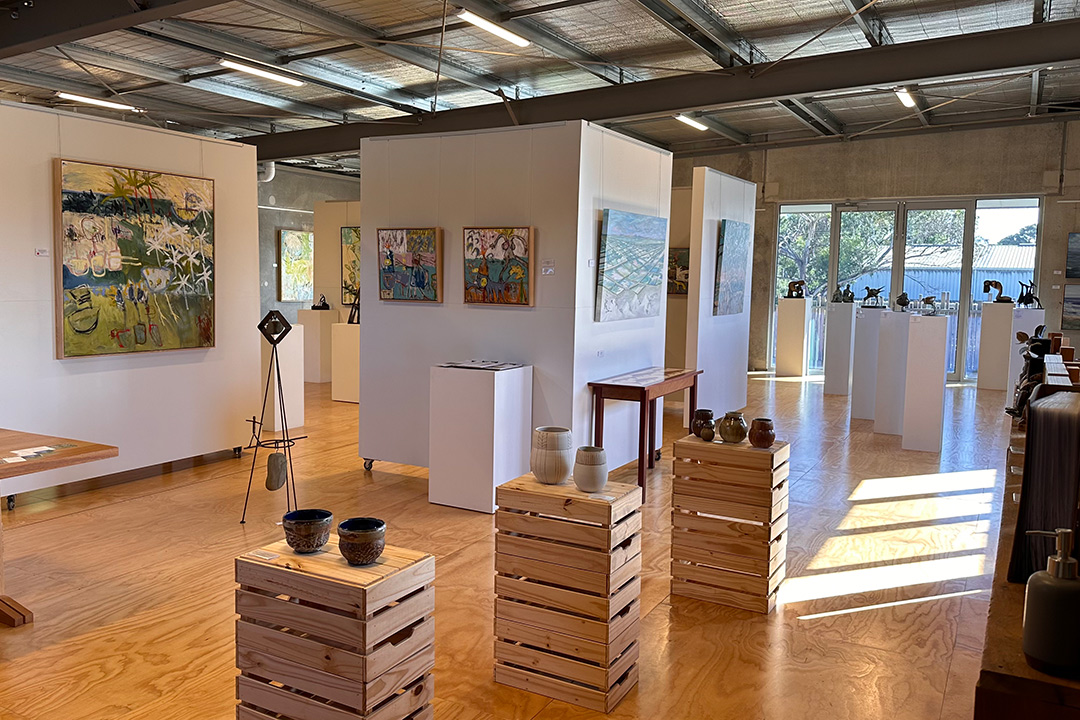 The Hive Gallery at Ocean Grove
The Hive Gallery at Ocean Grove
Fill the belly, feed the soul
It’s a bit overwhelming how many good places there are to eat and drink here, from restaurants to wineries, distilleries and passionate producers. Best thing to do is to grab a map of the Bellarine Taste Trail and take a drive.
Wallington’s Ket Baker is a local’s favourite for fresh sourdough bread and irresistible sourdough pastries (I can recommend the lemon chausson).
Bellarine Smokehouse has won awards for its cured and smoked salmon, barramundi, trout, eel and Murray cod.
Wineries never disappoint for good food and wine cellar door experiences, and around a dozen are scattered across the Bellarine. Jack Rabbit, Scotchmans Hill and Terindah Estate are especially appealing for their fabulous views across the vines to the twinkling sea. This area is well known for its cool-climate wines, including fantastic pinot noir, shiraz and Chardonnay.
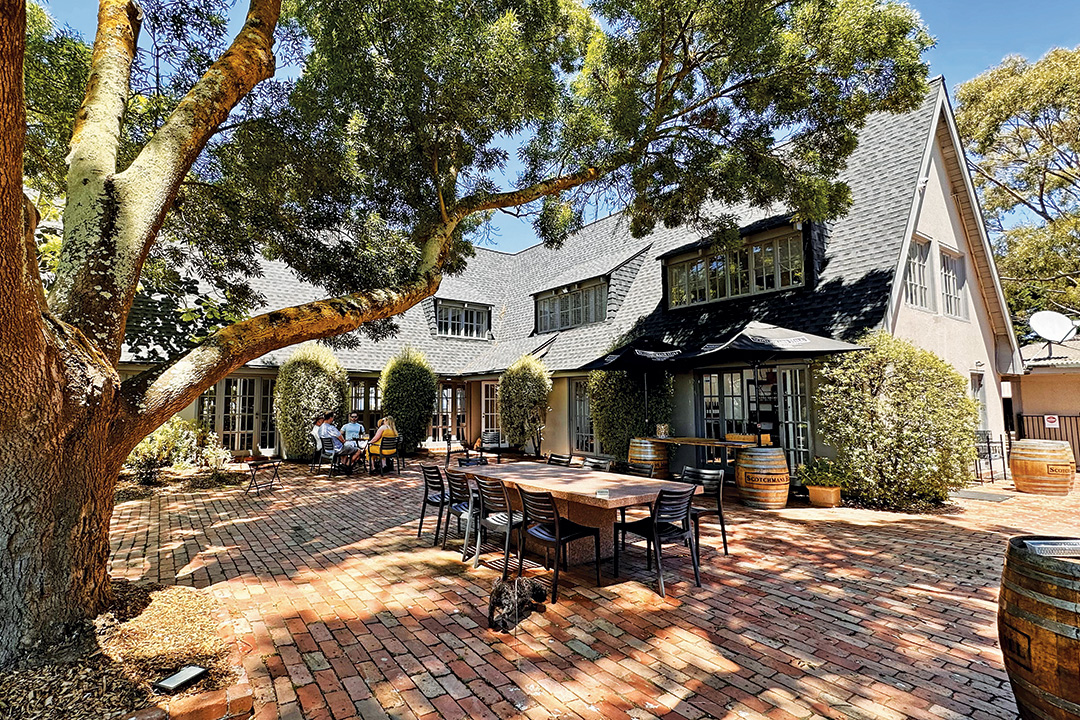 Scotchmans Hill Winery
Scotchmans Hill Winery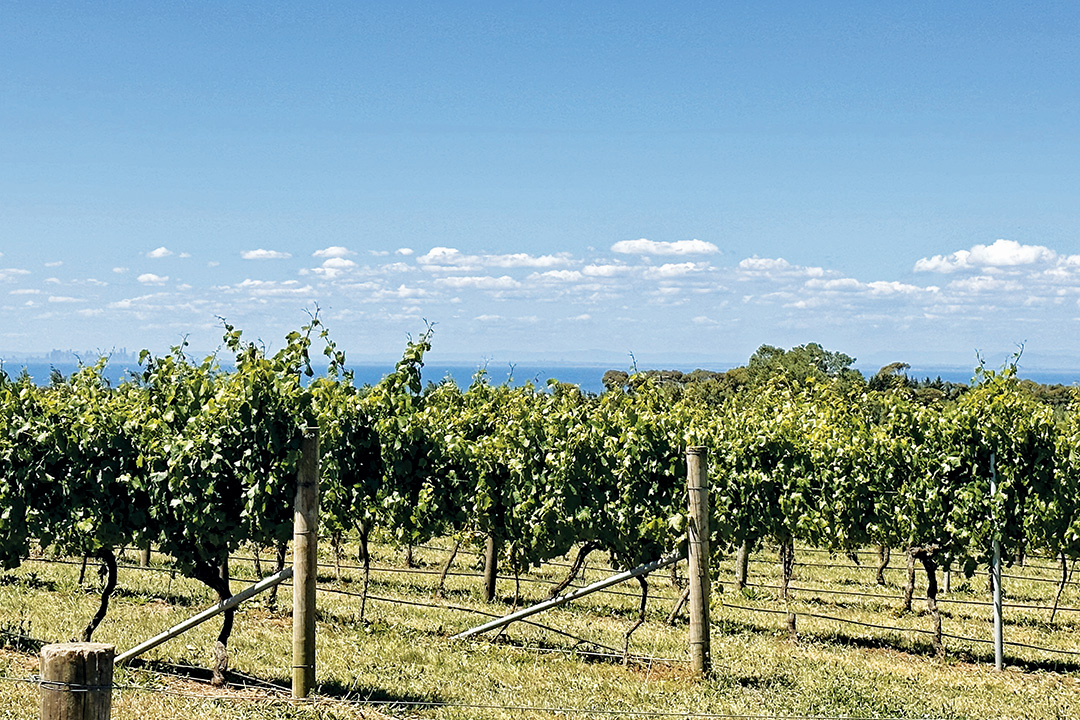 Views from Scotchmans Hill Winery
Views from Scotchmans Hill Winery
If you’re into mussels, Portarlington produces some of the country’s best — they even hold an annual mussel festival in January. Plenty of restaurants will serve them up but to see how they’re cultivated, head out on a fancy renovated trawler with Portarlington Mussel Tours. You’ll also get to sample the results of a cooking demo with paired local wines.
My personal favourite way to enjoy the flavours of the Bellarine is on The Q Train which dishes up a truly divine five-course degustation, sourced mostly from local producers. Views of the countryside and Swan Bay are the cherry on top.
Glowing with good looks, culture, food and history, the Bellarine really is quite the belle.
Travel planner
How to get to the Bellarine Peninsula
From the west, Geelong is the gateway to the Bellarine (it’s also the new mainland port for the Spirit of Tasmania). If you’re travelling from the east, catch the ferry from Sorrento on the Mornington Peninsula to Queenscliff. Ferries depart on the hour and take 40 minutes.
Where to stay
There are loads of caravan parks around the Bellarine. A few options include:
- Bellarine Bayside — hundreds of absolute beachfront and not-quite-beachfront sites across Portarlington, Indented Head and St Leonards.
- Barwon Heads Caravan Park — tucked in the trees, a stone’s throw from the water and close to shops and cafes.
- Riverview Family Caravan Park — on the sheltered Barwon River and a short walk to Ocean Grove’s surf beach.
- BIG4 Ingenia Holidays Queenscliff Beacon — caravanning with the works, from indoor heated pool to 24/7 fitness studio with free yoga and pilates.
- BIG4 Bellarine Holiday Park — a convenient drive from all the main attractions on the Bellarine Peninsula. There's accommodation suitable for any style and budget, glamping tents and a whole range of facilities and activities to suit the whole family.
Where to eat
- Download the Bellarine Taste Trail map to explore dozens of wineries, distilleries, producers and providores.
- The Q Train is degustation dining with a buffet of views.
- You can’t go past the heritage Portarlington Grand Hotel for an excellent pub feed .
- In prime position, overlooking Ocean Grove’s surf beach is The Dunes.
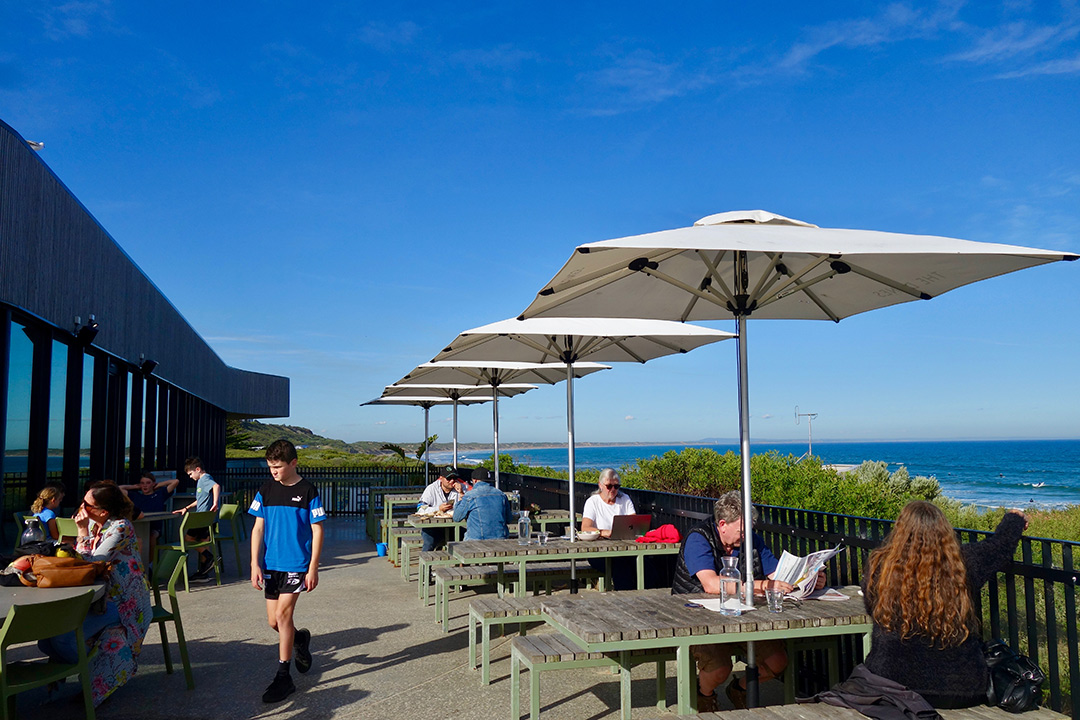 The Dunes at Ocean Grove
The Dunes at Ocean Grove
For more information and inspiration, head to the Visit Geelong Bellarine website.
THE NEXT STEP
If you want to learn the latest caravan news, find the most innovative new caravans and camping gear or get inspired to plan your next adventure to some of Australia's best getaway destinations, subscribe to our weekly newsletter. We promise to send you only the best content.
Related Articles:
An insider's look at Caravan of the Year 2024 (Held on the Bellarine Peninsula)







